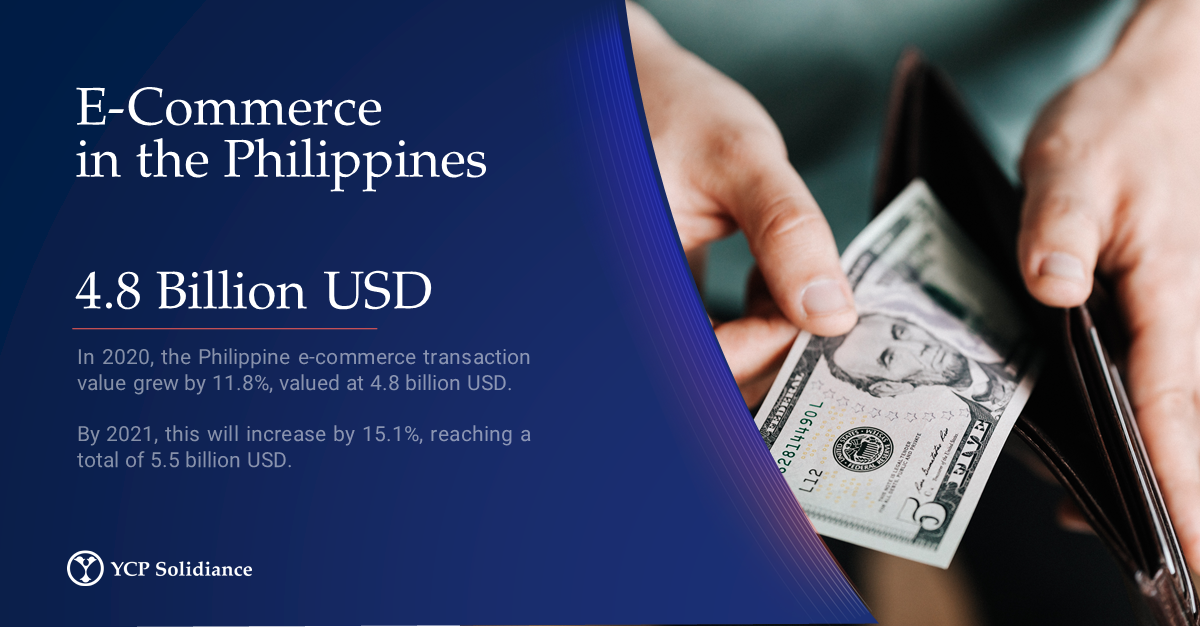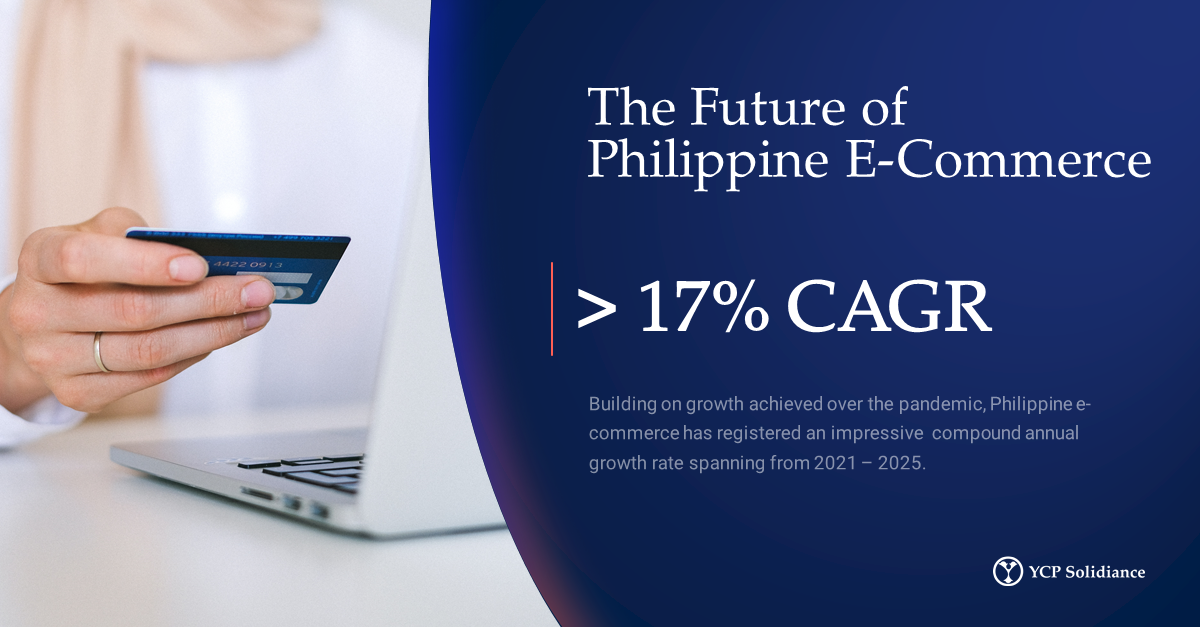This article was developed and guided by expert insight from YCP Solidiance Associate Kato L. Lim, who is based in our Manila office and has led several projects in international policy, construction, F&B, and digital transformation among other industries. With respect to e-commerce, he has crafted online market entry business plans for personal care and chemical products and has helped foreign venture capitalist clients discover food and beverage, healthcare, and other service e-Commerce opportunities within the Philippines.
Due in large part to the global COVID-19 pandemic, the Philippine e-commerce industry has grown rapidly in recent years. As per data from the country’s Department of Trade and Industry (DTI), the Philippine e-commerce industry contributed approximately 12 billion USD, or 3.4%, to the national GDP in 2020.
Advantages such as accessibility and convenience have undoubtedly increased e-commerce’s popularity among Filipinos. Given that e-commerce players in the Philippines continue to leverage these benefits and innovate to one-up the competition, the industry is expected to grow even faster in the coming years.
E-commerce in the Philippines
Recognizing the need to sustain the impressive growth of e-commerce in the Philippines, government entities have been actively engaging with the industry. One such example is the DTI and their recently published E-Commerce Roadmap which spans from 2022 to 2030.
In this roadmap, several factors that will contribute to the success of Philippine e-commerce are identified. For instance, one of the most important factors to e-commerce growth in the Philippines will be to enable and accelerate the digital transformation of MSMEs. In line with this, the DTI aims to increase the number of e-commerce businesses in the country to one million by the end of 2022.
The attempt to help MSMEs digitally transform will rely heavily on public and private collaboration. To replicate such success, e-commerce players can look to how the Philippine fintech industry has accelerated the growth and adoption of cashless payments and mobile banking. Major fintech players like GCash and PayMongo have managed to develop their platforms with accessibility in mind, which enables them to cater to a diverse set of entrants on both public and private levels. Moving forward, e-commerce platforms in the Philippines should aspire to do the same for buyers and sellers alike.
Collaboration with Other Industries
Aside from public and private sector cooperation, e-commerce players should also explore opportunities to collaborate with other industries. In the YCP Solidiance article “Digital Transformation in the Philippines’ Logistics Industry via E-Commerce,” research revealed that the e-commerce industry’s growth has had a significant impact on the Philippine logistics market, as the supply chain fulfillment of e-commerce services resulted in increased demand for logistical services.
Likewise, the trend of utilizing e-commerce and online models can also be observed in the healthcare sector. One such example is the emergence of e-health services like AIDE Mobile App, which is a home health care platform that offers several medical solutions like chat and video teleconsultations. Beyond this, healthcare insurance providers like Maxicare have also begun selling prepaid plans on e-commerce platforms.
As more and more industries consider offering their services in digital spaces to capture the online segment, e-commerce businesses find themselves in an advantageous position. Capitalizing on such opportunities will be beneficial for all parties involved as it should inevitably lead to complementary growth.
Given that those involved in e-commerce continue to invest in strengthening relationships with those situated in the public and private sectors, while also exploring opportunities to collaborate with businesses in other industries, expect e-commerce to continue its impressive growth this 2022.
To get insight into how e-commerce and related industries will impact the business landscape within Southeast Asia, subscribe to our newsletter here and check out these reports:
- Business Trends in the Philippines for 2022
- Digital Transformation in the Philippines’ Logistics Industry via E-Commerce
- The Growth of Auto Components E-Commerce in Asia
- Navigating Cross-Border Transactions in Asia's E-Commerce Industry






